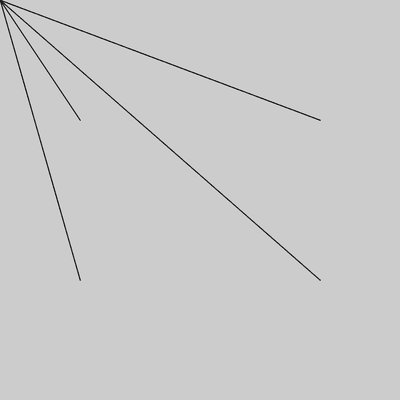Reference+
Name
mag()
Description
Calculates the magnitude (or length) of a vector. A vector is a direction in space commonly used in computer graphics and linear algebra. Because it has no "start" position, the magnitude of a vector can be thought of as the distance from coordinate (0,0) to its (x,y) value. Therefore, mag() is a shortcut for writing dist(0, 0, x, y).
Examples
size(400, 400); float x1 = 80; float x2 = 320; float y1 = 120; float y2 = 280; line(0, 0, x1, y1); println(mag(x1, y1)); // Prints "144.22205" line(0, 0, x2, y1); println(mag(x2, y1)); // Prints "341.76016" line(0, 0, x1, y2); println(mag(x1, y2)); // Prints "291.2044" line(0, 0, x2, y2); println(mag(x2, y2)); // Prints "425.20584"![Image output for example 1]()
Syntax
mag(a, b)mag(a, b, c)
Parameters
a(float)first valueb(float)second valuec(float)third value
Return
float
Related

This work is licensed under a Creative Commons Attribution-NonCommercial-ShareAlike 4.0 International License.
